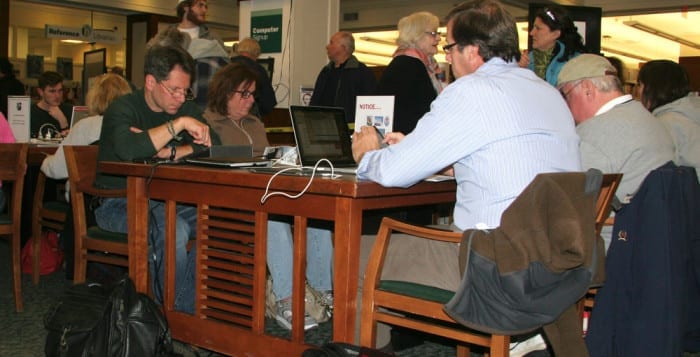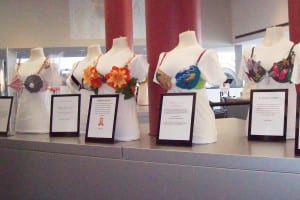By David Dunaief
We know that inflammation is a critical part of many chronic diseases. Rheumatoid arthritis (RA) is no exception. With RA, inflammation is rampant throughout the body and contributes to painful joints, most commonly concentrating bilaterally in the smaller joints of the body, including the metacarpals and proximal interphalangeal joints of the hand, as well as the wrists and elbows. With time, this disease can greatly diminish our ability to function, interfering with our activities of daily living. The most basic of chores, such as opening a jar, can become a major hindrance.
In addition, RA can cause extra-articular, a fancy way of saying outside the joints, manifestations and complications. These can involve the skin, eyes, lungs, heart, kidneys, nervous system and blood vessels. This is where it gets a bit dicier. With increased complications comes an increased risk of premature mortality (1).
Four out of 10 RA patients will experience complications in at least one organ. Those who have more severe disease in their joints are also at greater risk for these extra-articular manifestations. Thus, those who are markedly seropositive for the disease, showing elevated biomarkers like rheumatoid factor (RF), are at greatest risk (2). They have an increased risk of cardiovascular disease events, such as heart attacks and pulmonary disease. Fatigue is also increased, but the cause is not well understood. We will look more closely at these complications.
Are there treatments that may increase or decrease these complications? It is a very good question, because some of the very medications used to treat RA also may increase risk for extra-articular complications, while other drugs may reduce the risks of complications. We will try to sort this out, as well. The drugs used to treat RA are disease-modifying antirheumatic drugs (DMARDs), including methotrexate; TNF inhibitors, such as Enbrel (etanercept); oral corticosteroids; and NSAIDs (non-steroidal anti-inflammatory drugs).
It is also important to note that there are modifiable risk factors. We will focus on two of these, weight and sugar. Let’s look at the evidence.
CARDIOVASCULAR DISEASE BURDEN
We know that cardiovascular disease is very common in this country for the population at large. However, the risk is even higher for RA patients; these patients are at a 50 percent higher risk of cardiovascular mortality than those without RA (3). The hypothesis is that the inflammation is responsible for the RA-cardiovascular disease connection (4). Thus, oxidative stress, cholesterol levels, endothelial dysfunction and high biomarkers for inflammation, such as ESR (erythrocyte sedimentation rate) and CRP (C-reactive protein), play roles in fostering cardiovascular disease in RA patients (5).
THE YING AND YANG OF MEDICATIONS
Although drugs such as DMARDS (including methotrexate and TNF inhibitors, Enbrel, Remicade, Humira), NSAIDs (such as celecoxib) and corticosteroids are all used in the treatment of RA, some of these drugs increase cardiovascular events and others decrease them. In meta-analysis (a group of 28 studies), the results showed that DMARDS reduced the risk of cardiovascular events by up to 30 percent, while NSAIDs and corticosteroids increased the risk (6). The oral steroids had the highest risk of heart complications, approximately a 50 percent rise in risk. This may be one reason rheumatologists encourage their RA patients to discontinue oral steroid treatments as quickly as possible.
In an observational study, the results reaffirm that corticosteroids increased the risk of a heart attack in RA patients, this time by 68 percent (7). The study involved over 8,000 patients with a follow-up of nine years. Interestingly, there was a dose-response curve. In other words, the results also showed that for every 5 mg increase in dosage, there was a corresponding 14 percent increase in heart attack risk.
BAFFLING DISEASE COMPLICATION
Most complications seem to have a logical connection to the original disease. Well, it was a surprise to researchers when the results of the Nurses’ Health Study showed that those with RA were at increased risk of cardiovascular disease and of respiratory disease (8). In fact, the risk of dying from respiratory disease was 106 percent higher in the women with RA compared to those without, and the risk was even higher in women who were seropositive (had elevated levels of rheumatoid factor). The authors surmise that seropositive patients have greater risk of death from respiratory disease because they have increased RA severity compared to seronegative patients. The study followed approximately 120,000 women for a 34-year duration.
WHY AM I SO TIRED?
While we have tactics for treating joint inflammation, we have yet to figure out how to treat the fatigue associated with RA. In a recently published Dutch study, the results showed that while the inflammation improved significantly, fatigue only changed minimally (9). The consequences of fatigue can have a negative impact on both the mental and physical qualities of life. There were 626 patients involved in this study for eight years of follow-up data. This study involved two-thirds women, which is significant; women in this and in previous studies tended to score fatigue as more of a problem.
LIFESTYLES OF THE MORE PAINFUL AND DEBILITATING
We all want a piece of the American dream. To some that means eating like kings of past times. Well, it turns out that body mass index plays a role in the likelihood of developing RA. According to the Nurses’ Health Study, those who are overweight or obese and are ages 55 and younger have an increased risk of RA, 45 percent and 65 percent, respectively (10). There is higher risk with increased weight because fat has pro-inflammatory factors, such as adipokines, that may contribute to the increased risk. Weight did not influence whether they became seropositive or seronegative RA patients.
With a vegetable-rich, plant-based diet you can reduce inflammation and thus reduce the risk of RA by 61 percent (11). In my clinical practice, I have seen numerous patients able to reduce their seropositive loads to normal or near-normal levels by following this type of diet.
SUGAR, SUGAR!
At this point, we know that sugar is bad for us. But just how bad is it? When it comes to RA, results of the Nurses’ Health Study showed that sugary sodas increased the risk of developing seropositive disease by 63 percent (12). In subset data of those over age 55, the risk was even higher, 164 percent. This study involved over 100,000 women followed for 18 years.
THE JUST PLAIN WEIRD – INFECTION FOR THE BETTER
Every so often we come across the surprising and the interesting. I would call it a Ripley’s Believe It or Not moment. In a recent study, those who had urinary tract infections, gastroenteritis or genital infections were less likely to develop RA than those who did not (13). The study did not indicate a time period or potential reasons for this decreased risk. However, I don’t think I want an infection to avoid another disease. When it comes to RA, prevention with diet is your best ally. Barring that, disease-modifying anti-rheumatic medications are important for keeping inflammation and its progression in check. However, oral steroids and NSAIDs should generally be reserved for short-term use. Before considering changing any medications, discuss it with your physician.
REFERENCES
(1) J Rheumatol 2002;29(1):62. (2) uptodate.com. (3) Ann Rheum Dis 2010;69:325–31. (4) Rheumatology 2014;53(12):2143-2154. (5) Arthritis Res Ther 2011;13:R131. (6) Ann Rheum Dis 2015;74(3):480-489. (7) Rheumatology 2013;52:68-75. (8) ACR 2014: Abstract 818. (9) RMD Open 2015. (10) Ann Rheum Dis. 2014;73(11):1914-1922. (11) Am J Clin Nutr 1999;70(6),1077–1082. (12) Am J Clin Nutr 2014;100(3):959-67. (13) Ann Rheum Dis 2015;74:904-907.
Dr. Dunaief is a speaker, author and local lifestyle medicine physician focusing on the integration of medicine, nutrition, fitness and stress management. For further information, go to the website www.medicalcompassmd.com and/or consult your personal physician.















